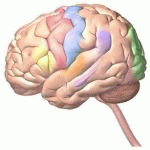Neurology
|
4 may 2012 16:37:56 |
| DRD2 and PPP1R1B (DARPP-32) polymorphisms independently confer increased risk for autism spectrum disorders and additively predict affected status in male-only affected sib-pair families (Behavioral and Brain Functions) |
|
Tweet Background:
The neurotransmitter dopamine (DA) modulates executive functions, learning, and emotional processing, all of which are impaired in individuals with autism spectrum disorders (ASDs). Our previous findings suggest a role for dopamine-related genes in families with only affected males.
Methods:
We examined two additional genes which affect DA function, the DRD2 and PPP1R1B (DARPP-32) genes, in a cohort of 112 male-only affected sib-pair families. Selected polymorphisms spanning these genes were genotyped and both family-based and population-based tests were carried out for association analysis. General discriminant analysis was used to examine the gene-gene interactions in predicting autism susceptibility.
Results:
There was a significantly increased frequency of the DRD2 rs1800498TT genotype (P = 0.007) in affected males compared to the comparison group, apparently due to over-transmission of the T allele (P = 0.0003). The frequency of the PPP1R1B rs1495099CC genotype in affected males was also higher than that in the comparison group (P = 0.002) due to preferential transmission of the C allele from parents to affected children(P = 0.0009). Alleles rs1800498T and rs1495099C were associated with more severe problems in social interaction (P = 0.0002 and P = 0.0016, respectively) and communication (P = 0.0004 and P = 0.0046), and increased stereotypic behaviours (P = 0.0021 and P = 0.00072). General discriminant analysis found that the DRD2 and PPP1R1B genes additively predicted ASDs (P = 0.00011; Canonical R = 0.26) and explain ~7% of the variance in our families. All findings remained significant following corrections for multiple testing.
Conclusion:
Our findings support a role for the DRD2 and PPP1R1B genes in conferring risk for autism in families with only affected males and show an additive effect of these genes towards prediction of affected status in our families. |
| 278 viewsCategory: Neurology |
 Corticotropin-releasing hormone and extracellular mitochondria augment IgE-stimulated human mast-cell vascular endothelial growth factor release, which is inhibited by luteolin (Journal of Neuroinflammation) Corticotropin-releasing hormone and extracellular mitochondria augment IgE-stimulated human mast-cell vascular endothelial growth factor release, which is inhibited by luteolin (Journal of Neuroinflammation)Viral-toxin interactions and Parkinson`s disease: poly(I:C) priming enhanced the neurodegenerative effects of paraquat (Journal of Neuroinflammation) 
|
| blog comments powered by Disqus |
MyJournals.org
The latest issues of all your favorite science journals on one page
The latest issues of all your favorite science journals on one page



